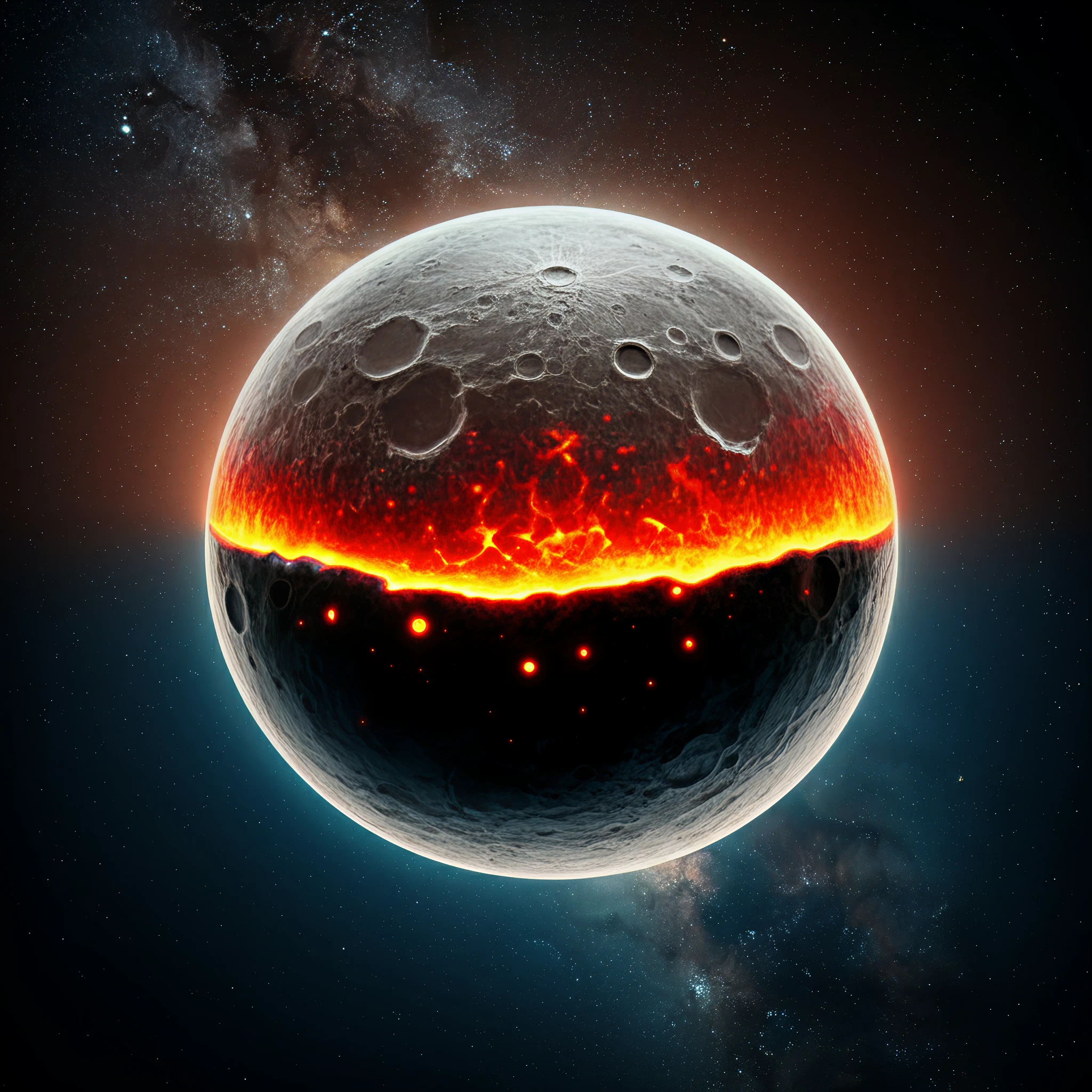The Moon has fascinated humans for centuries, serving as a luminous companion in the night sky and the subject of countless myths, art, and scientific endeavors. However, beneath its cratered surface lies a mystery that many space enthusiasts and scientists continue to explore: does the Moon have a molten core? Understanding the answer not only satisfies curiosity but also deepens our comprehension of the Moon’s history, geology, and its relationship with Earth.
Evidence for a Molten Core
Seismic data and magnetic field studies form the backbone of the evidence suggesting that the Moon has a molten core. During NASA’s Apollo missions, seismic experiments were deployed on the lunar surface to detect moonquakes. These instruments provided critical insights into the Moon’s internal structure. Seismic readings identified three primary layers of the Moon’s interior:
- The Crust: The outermost layer, similar to Earth’s crust, composed of silicate rocks.
- The Mantle: A thick, semi-rigid layer beneath the crust.
- The Core: At the center, where seismic waves suggested the presence of molten material.
The Moon’s faint magnetic field also offers clues. While it is much weaker than Earth’s, studies of lunar samples from the Apollo missions showed that the Moon once had a stronger magnetic field in its past. This strong ancient magnetism implies the existence of a dynamo effect, a phenomenon caused by the movement of molten metal within a planet’s core.
Additionally, tidal forces play a role in maintaining heat in the lunar core. The gravitational interactions between the Earth, Moon, and Sun create friction within the Moon, which helps to keep some regions of the core molten.
Composition of the Lunar Core
Through a combination of seismic data and mathematical modeling, scientists have formed a hypothesis about what the Moon’s core is made of. The core is believed to consist primarily of iron, with smaller amounts of nickel and sulfur. These elements are similar to those found in Earth’s core, further solidifying the idea of a shared origin between the Earth and the Moon.
The core itself is divided into two parts:
- A Solid Inner Core measuring roughly 240 kilometers (150 miles) in radius.
- A Molten Outer Core that is about 90 kilometers (56 miles) thick.
The molten outer core is believed to interact with the mantle, further contributing to occasional heat and magnetic activity observed on the Moon.
Comparison to Earth’s Core
While the Moon’s core shares similarities with Earth’s, there are several notable differences:
- Size: The Moon’s core is significantly smaller, constituting about 1-2% of its total mass, whereas Earth’s core makes up nearly 15% of its mass.
- Magnetic Field: Earth’s core generates a strong magnetic field that protects the planet from solar winds. The Moon, on the other hand, only retains a weak magnetic field, suggesting much less vigorous core activity.
- Internal Heating: Earth’s core remains hot due to a combination of residual heat from its formation, radioactive decay, and gravitational interactions. The Moon’s core has far less radioactive material, resulting in diminished heating over time.
Implications for Lunar Evolution
Understanding the Moon’s molten core provides valuable insights into its evolution. The Moon likely formed from the debris of a massive collision between a Mars-sized body and the early Earth around 4.5 billion years ago. This violent event would have created a molten Moon, with heavier materials like iron sinking to form its core.
Over time, the Moon cooled significantly, but tidal forces from its gravitational interaction with Earth continued to generate internal friction and heat. This process was crucial in shaping the landscape we see today, including volcanic activity that produced the dark basaltic plains, or “maria,” on its surface.
The presence of a partly molten core also played a role in the Moon’s ancient magnetic field, which may have provided some protection from solar radiation during its early history.
Ongoing Research
Despite remarkable advances in lunar science, many questions about the Moon’s core remain unanswered. Current missions, like NASA’s Artemis program, aim to return humans to the Moon and deploy advanced technology for studying its geological structure. Additionally, future robotic missions and lunar orbiters equipped with improved seismic sensors and magnetometers will refine our understanding of the Moon’s molten core and its impact on lunar geology.
Conclusion
The Moon does indeed harbor a molten core, albeit much smaller and less active than Earth’s. This hidden feature plays a vital role in understanding the Moon’s formation, evolution, and ongoing relationship with Earth. While much has been discovered through seismic data, magnetic studies, and lunar samples, new missions promise to unlock even more secrets buried beneath the Moon’s surface.
Curious to explore more about how stellar bodies like the Moon shape our universe? Space research is a frontier that always promises exciting discoveries for enthusiasts and scientists alike. Watch this space for updates on the cutting-edge developments from the latest lunar missions.








